
Lacto-Fermented Mayonnaise: A Delicious Twist on a Classic Condiment
Mayonnaise is a beloved condiment known for its creamy texture and tangy flavor. While store-bought mayonnaise is readily available, making your own lacto-fermented mayonnaise at home can take your culinary skills to the next level. In this blog post, we will explore the process of lacto-fermenting mayonnaise, its benefits, and provide you with a step-by-step guide to create your own probiotic-rich homemade mayonnaise.
What it Lacto-Fermentation?
Lacto-fermentation is a method of preservation using beneficial bacteria. Vegetables, fruit, dairy and bread can all be fermented. It preserves the food because over time, lactic acid is produced, which preserves food, like its name implies, due to its acidity. Various foods use a variety of fermenting techniques: alcohol, yeast, mold and salt are some examples. The fermentation vehicle used in lacto fermented mayonnaise is whey. The process of fermenting food not only extends the shelf life of the food but also enhances its flavor and nutritional value.
Benefits of Lacto-Fermented Mayonnaise:
1. Probiotic Powerhouse: Lacto-fermented probiotic mayonnaise is teeming with beneficial bacteria that promote a healthy gut microbiome. These probiotics aid in digestion, boost immune function, and contribute to overall well-being.
2. Enhanced Nutritional Profile: The fermentation process increases the bioavailability of nutrients present in the ingredients used to make mayonnaise. This means that your homemade lacto-fermented mayonnaise will be richer in vitamins, minerals, and enzymes compared to its non-fermented counterpart.
3. Improved Digestibility: Fermentation breaks down complex molecules into simpler forms, making lacto-fermented mayonnaise easier for our bodies to digest. This can be particularly beneficial for individuals with digestive issues or food sensitivities.
4. Have you ever noticed how expensive the “better” mayonnaise is at the store? I still can’t figure out why it costs so much! Making your own is inexpensive and will all the benefits of the beneficial bacteria; neither of which store bought can claim!
“Homemade mayonnaise imparts valuable enzymes, particularly lipase, to sandwiches, tuna salad, chicken salad, and many other dishes and is very easy to make in a food processor. The addition of whey [for lacto-fermentation] will help your mayonnaise last longer, adds enzymes and increases nutrient content.”
-Nourishing Traditions book
Interested in trying other fermented foods?
Tips for making homemade mayonnaise:
Mayonnaise is an emulsion of oil, egg yolks, acid (usually vinegar or lemon juice), and salt. The key to achieving a creamy and stable mayonnaise lies in the emulsification process. Here are some essential tips to keep in mind:
Ingredients:
Use fresh eggs at room temperature for better emulsification. It is crucial to ensure that your eggs are of high quality and free from any cracks or defects. Additionally, choose a neutral-flavored oil such as avocado oil or extra virgin olive oil to allow the other flavors to shine through. The flavor of regular olive oil is too strong and overwhelmed the mayonnaise.
Emulsification Technique:
Start by blending from the bottom. As soon as the bottom half has turned white, start moving up to incorporate the rest of the oil. Do not do this too quickly.
Troubleshooting Common Issues:
While making homemade mayonnaise, you might encounter some common issues that can be easily resolved with these troubleshooting tips:
-Thin or Runny Mayonnaise
If your mayonnaise turns out thin or runny, it could be due to adding the oil too quickly or not whisking/blending enough. To fix this, transfer the runny mayonnaise to a clean bowl and whisk in a fresh egg yolk. Slowly add the runny mayonnaise to the new egg yolk while whisking vigorously until it thickens.
-Curdled or Separated Mayonnaise
If your mayonnaise curdles or separates, it could be due to adding the oil too quickly or using ingredients that are not at room temperature. To fix this, start with a fresh egg yolk in a clean bowl and gradually whisk in the curdled mayonnaise, drop by drop, until it emulsifies again. This happens more often with the food processor method, not the immersion blender method.
-Adjusting Consistency and Flavor
To adjust the consistency of your mayonnaise, you can add a small amount of warm water or lemon juice while whisking until you reach the desired thickness. Additionally, feel free to experiment with different seasonings such as garlic, mustard, herbs, or spices to enhance the flavor profile of your homemade mayonnaise.
BONUS TIP
Mayonnaise can also be made in a blender or food processor or with a whisk and a bowl. Add all ingredients and slowly drizzle in the mayonnaise.
Check out my Sourdough Essentials Cookbook!
Supplies for making Lacto-Fermented Probiotic Mayonnaise:

Immersion blender– I have made homemade mayonnaise many different ways over the years and the immersion blender method is the easiest and nearly fail-proof! HERE is a good option for one.
Egg– Use fresh, clean eggs that are at room temperature. This really helps it emulsify and come together.
Vinegar– Use any type of vinegar you like. If it is a vinegar you like, you’re more likely to enjoy the taste of the mayo! Using raw, apple cider vinegar gives you even more benefits!
Salt– I use Redmond Real Salt in everything I make, mayonnaise included! It is full of minerals that are so good for your body. I have a link and discount code LAURA15 that will save you on your salt order.
Mustard– This seems like an odd ingredients in mayonnaise but it serves a purpose! It helps with emulsification but you cannot taste it at all.
Whey– This is the secret ingredient! This is what sets the mayonnaise apart from anything else out there. You can get a tablespoon of whey from plain yogurt when it has separated. You can also use kombucha or water kefir and it has the same affect.
Oil– Using the right oil is key. Regular olive oil will affect the taste and is too strong for this. Avocado oil or extra light, virgin olive oil work well.
Lacto-Fermented Mayonnaise
Ingredients
- 1 egg, room temperature
- 1 teaspoon mustard
- 1 teaspoon lemon juice
- 1/2 teaspoon sea salt
- 1 tablespoon vinegar
- 1 tablespoon whey (You can spoon liquid whey from yogurt, or strain yogurt to get the whey. It is also produced when making cheese. Other fermented liquids like kombucha, water kefir, fermented sauerkraut brine or fermented pickle brine also works.)
- 1 cup oil (neutral tasting, like avocado oil or extra light olive oil)
Instructions
- Add all ingredients to a jar, adding the oil last.
- Place immersion blender at the very bottom of the jar and turn on. Blend for several seconds and the mixture will begin to turn white. When half the mixture has turned white, begin moving the immersion blender up the jar to incorporate the rest of the oil. Do this slowly. When the oil has all been mixed in the mayonnaise is thick, stop blending.Place a lid on the jar and let sit for 6-8 hours or overnight. Refrigerate and enjoy!



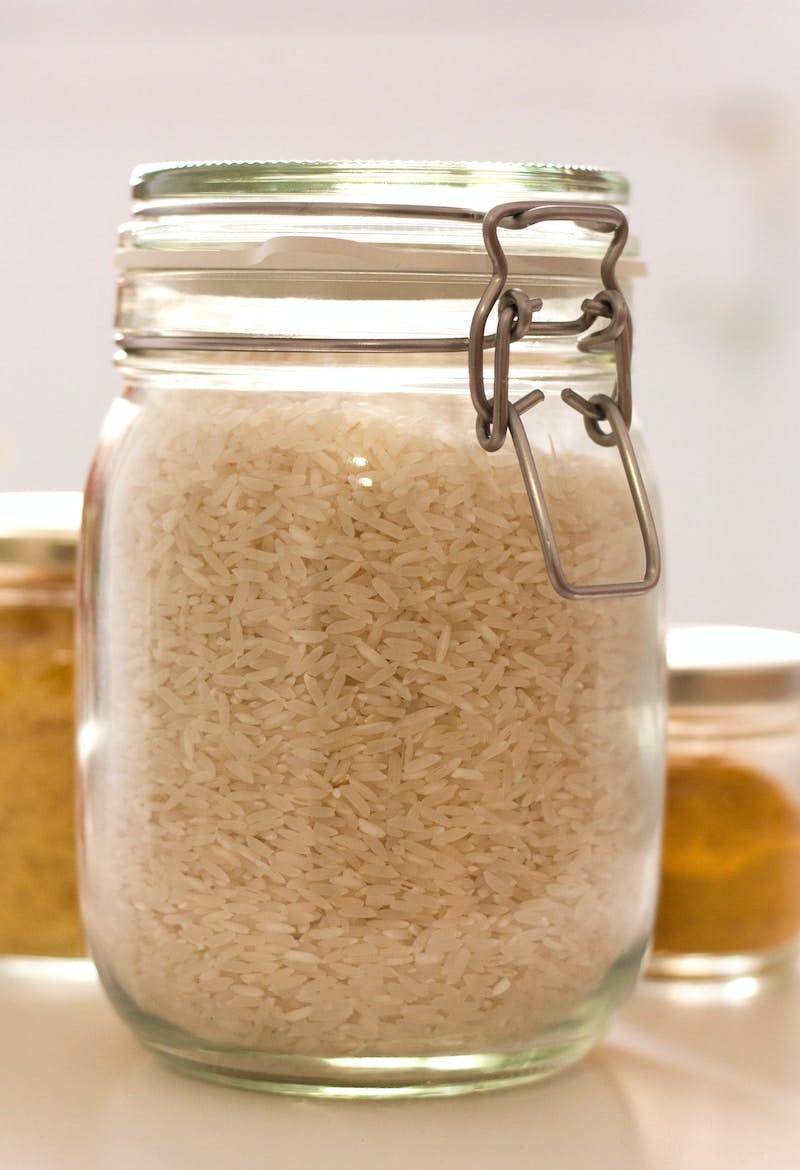

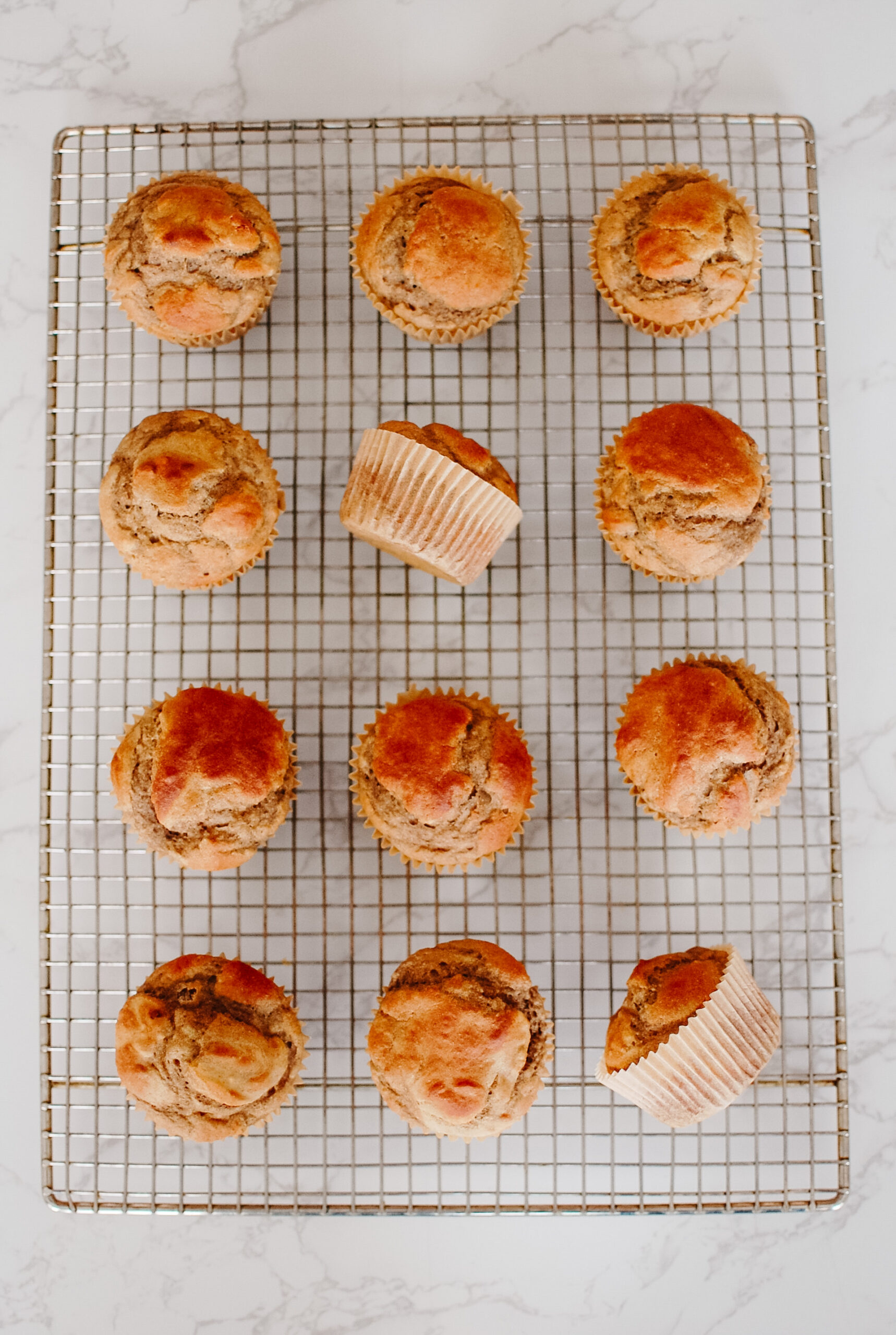
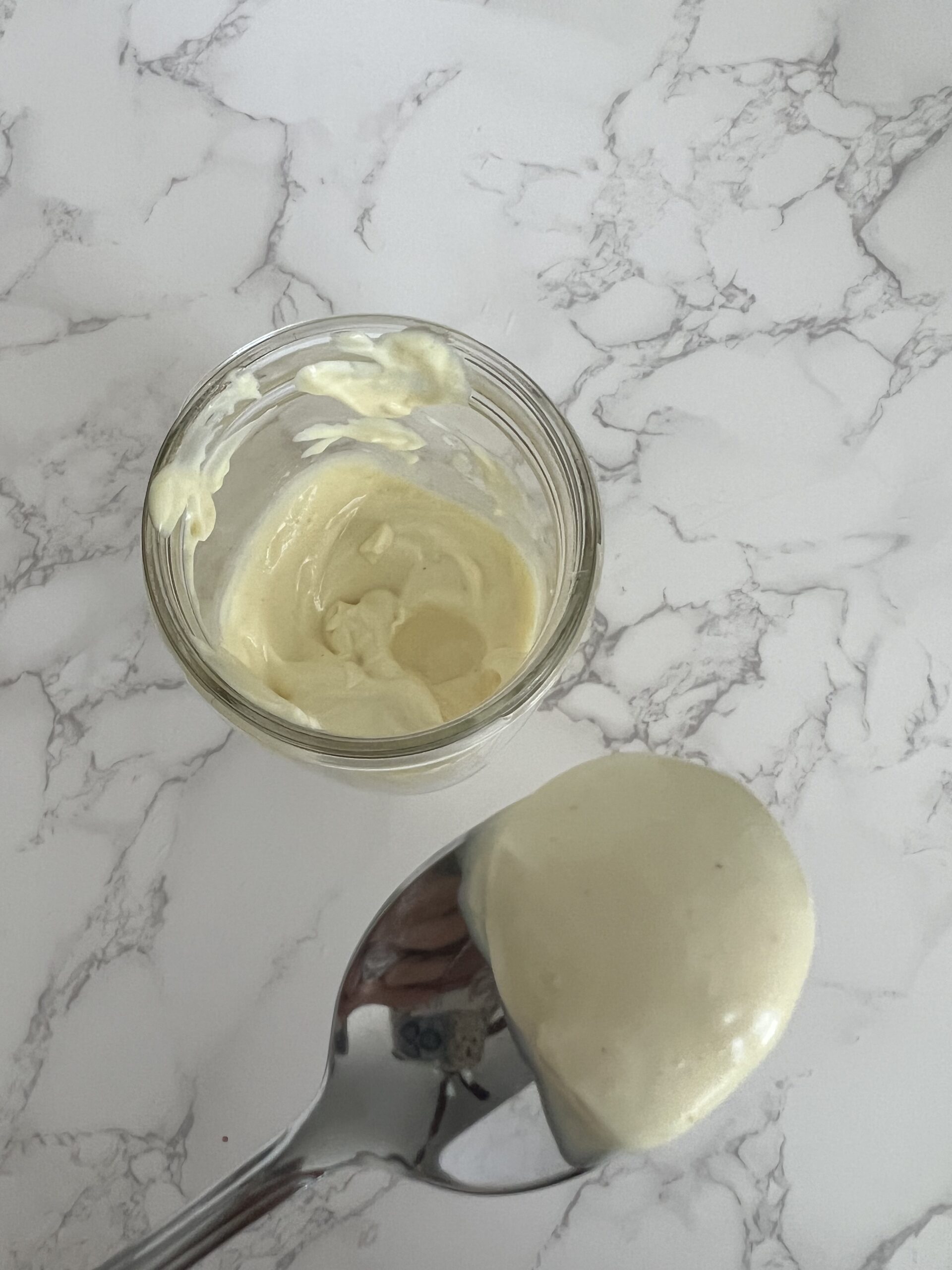

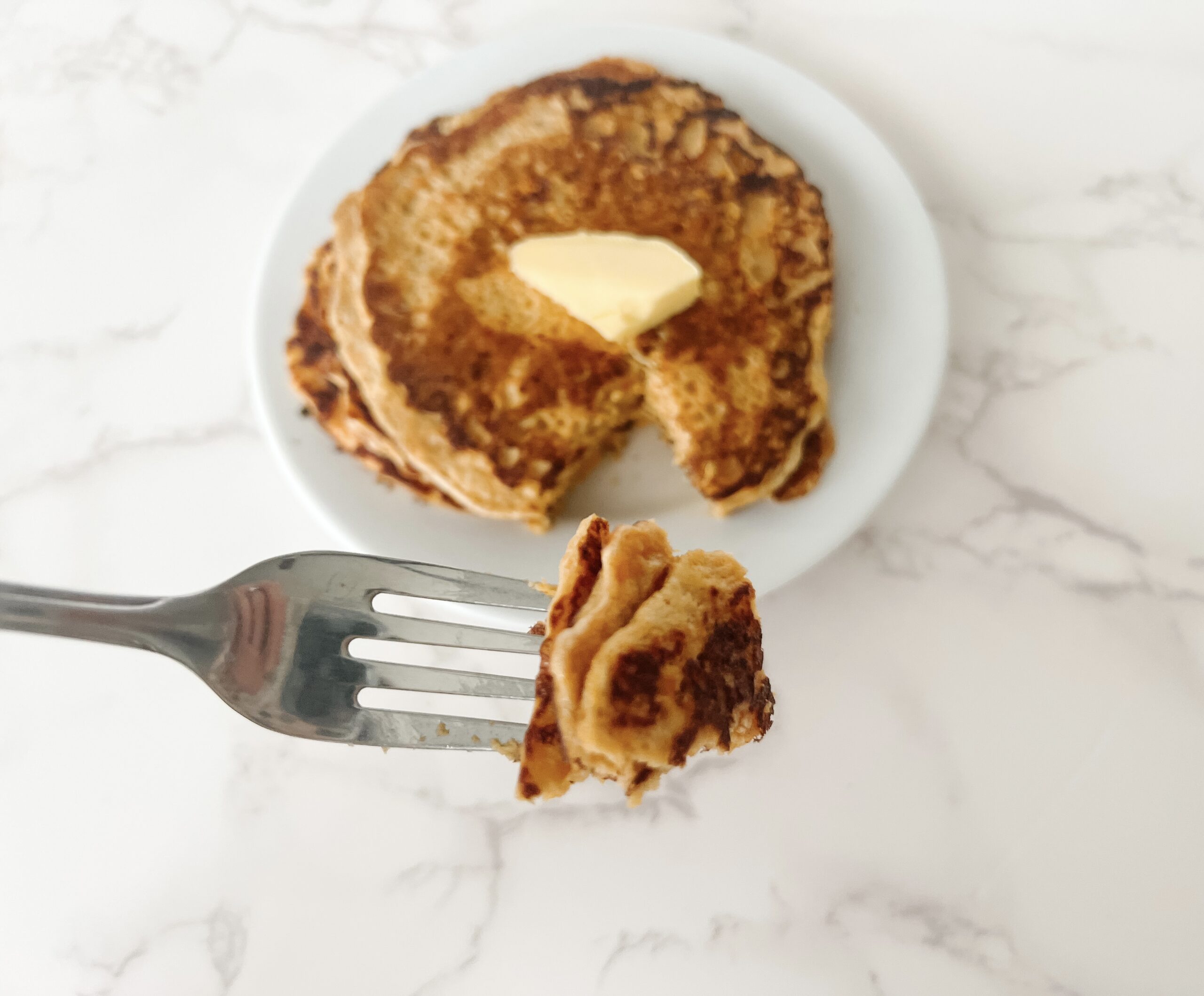
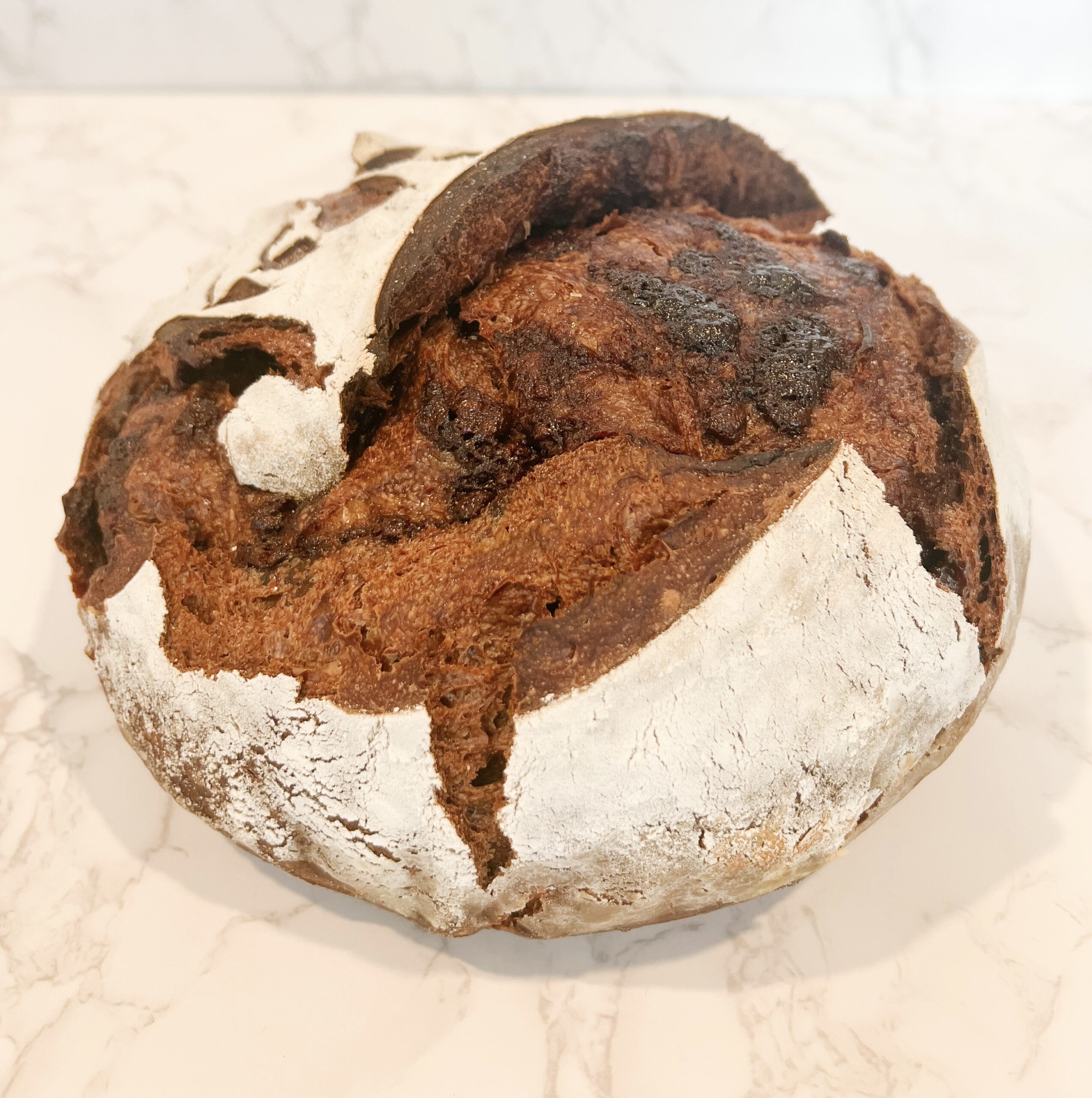
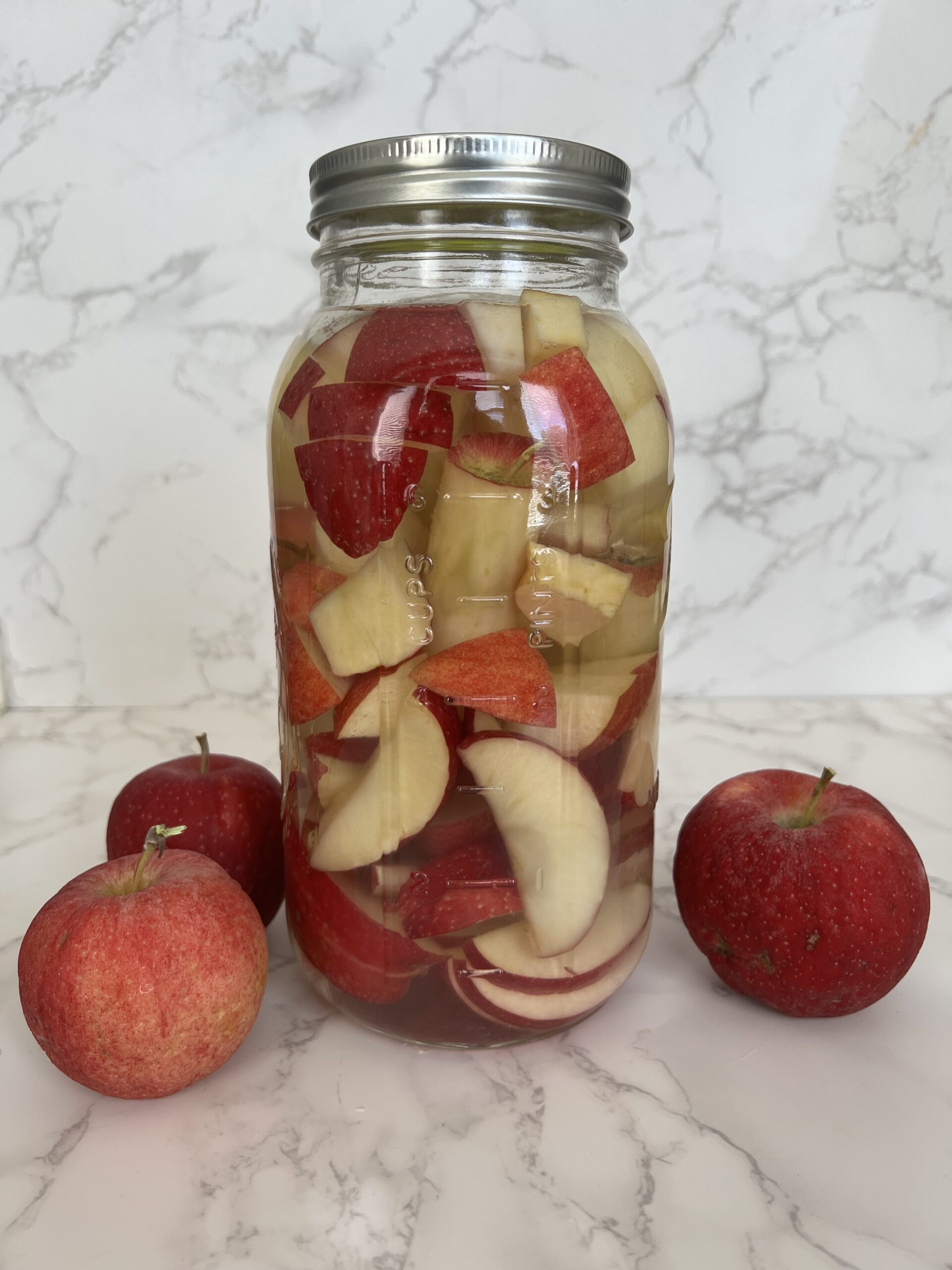

How long will it stay good in the fridge?
Author
At least a month!
Hi Laura. How long is the mayonnaise good?
Author
For at least a month!
I don’t make cheese or yogurt. How do I get the whey? Sorry if this is a dumb question..😅
WHAT?!?!?! AMAZING!!! I just tried making mayonnaise a few weeks ago and it was a complete flop! THIS RECIPE WORKED LIKE A CHARM!!
AND IT TASTE GREAT TOO!!
Even my 82 year-old mayonnaise die hard, Mama but this was amazing on a spoon!!! A THANK YOU SO MUCH!!
Author
Awesome!! I love that so much 😀
* yes by the way, I used the immersion blender and followed the exact directions! I stayed down low on the bottom of the jar and held still patiently. I turned it off, barely lift it up just to give a little air back underneath and put it right back down again. It started to look a little foamy at one point and then bada bing Bada boom it did its job.!!! I lifted it higher in the jar let it do. It’s job some more and then when a little bit up and down to make sure it was completely done.
I make my own mayo but have never used whey. Thanks for the new recipe.
Author
Love that you already make it! This will just give it a little something extra 🙂
Do we add classic yellow mustard?
Author
Yes!
This is very interesting, and one I am going to try the next time I make mayo. I use 50% neutral oil, like avocado oil, and 50% mild olive oil. The result is very flavorful and not strong.
Author
You can use any combination of oil you like! If olive and avocado are a good combo, keep doing it 🙂